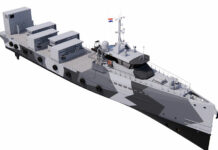“The Russian Naval Aviation is not expecting to replace its carrier-based Su-33 fighters in the current decade. An acquisition of a fifth generation fighter, base on the Sukhoi T-50 or other designs could be considered later in the decade, after the new fighter is proven in land-based service with the Russian Air Force.” Russian news agency RIA Novosti quoted the outgoing chief of the Naval Aviation and Air Defense Forces, Lt. General Valery Uvarov told. The statement made by General Uvarov represents a shift from previous statements by the armed forces command and Defense Ministry about the

feasibility of fielding a new naval fighter based on the Sukhoi T.50 design around 2016. While Russia is committed to embark on a fleet expansion plan to include the construction of the several new aircraft carriers to be built throughout the decade, the next generation fighter could be fielded to meet the initial deployment of the new fleet carriers, expected around 2025.
Meanwhile, the current Naval fighters are aging. To minimize the deterioration of its Naval Aviation, the Russian Navy plans to spend about $1 billion to field two squadrons with 24 MiG-29K, gradually replacing one squadron of 18 Su-33 and another unit flying Su-25 attack fighters, currently operating on board the Russian aircraft carrier Admiral Kuznetsov. The accommodation of more aircraft will be possible by the removal of the P-700 ‘Granit’ anti-ship missiles, currently carried on the Kuznetsov. Such work could be done during the vessels’ next major overhaul, planned for late 2012.
The MiG-29K was developed to meet the requirements of the Indian Navy for a carrier-based fighter. India has ordered 16 fighters and has options to buy 30 more. The itself could also be upgraded. In October 2010 Sukhoi began flight testing of a modernized version of the naval fighter at the company Far Eastern based near the city of Komsomolsk-on-Amur .
Being more realistic about the maturation process of the new fighter, Uvarov would like to see the T-50 fielded with the Air Force, rather than bearing the huge costs associated with the maturation process. Only after the fighter is proven it could be navalized for use on the Russian Navy carriers. “Conditions might be suitable by 2020” said Uvarov. While being concerned with the cost involved with the T-50 development, Uvarov said that the Russian Navy is not committed to T-50 as the only 5th generation fighter and is ready to consider competing proposals from other manufacturers that traditionally supply naval aviation fighters, including the MiG and Yakovlev design bureaus.
Related posts: Maiden Flight for Russia’s New Stealth Fighter





















